The final decade of the 19th century within the confines of the Ottoman Empire bore witness to the emergence of a cadre of young intellectuals. Comprising predominantly students and youthful military officers, these individuals closely monitored the Enlightenment movement in Europe. Their primary concern was to assimilate liberal and constitutional concepts with the aim of averting the Empire's disintegration and alleviating the populace from the authoritarian rule of Abdülhamid. These emerging intellectuals represented the succeeding generation, following in the footsteps of the Young Ottomans; nonetheless, they exhibited a similar lack of organization and unity as their predecessors. Subsequent to the suspension of the constitution in 1877, two armed attempts were made to overthrow Abdülhamid and replace him with Mehmet Murad V. One was orchestrated by the former Young Ottoman, Ali Suavi, while the other was led by the Freemasons who supported Murad. Both endeavors proved unsuccessful, but they underscored the increasing challenge to Hamidian absolutism.
The first coordinated opposition movement was established in 1889 by five students from the Military Medical School, namely İbrahim Temo, Abdullah Cevdet, Mehmed Reşit, İshak Sukuti, and Şerafettin Mağmumi. The clandestine organization, known as the İttihad-ı Osmani Cemiyeti (Ottoman Union Association), aimed to reinstate the constitution and the parliamentary system. As the organization expanded in the ensuing years, it attracted the attention of the Sultan. Some of its members were apprehended by the Sultan's agents, while others managed to evade capture by seeking refuge in Europe, with a majority finding sanctuary in Paris.
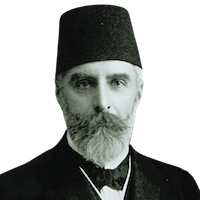
In Paris, these youthful intellectuals encountered Ottoman patriots who were actively critiquing Sultan Abdülhamid through the pamphlets and magazines they published. Leading this Paris-based group was Ahmed Rıza Bey, who, along with other expatriates, had established a modest organization known as the İttihat ve Terakki Cemiyeti (Committee of Union and Progress). They amalgamated with compatriots arriving from Istanbul and eventually became known as the Jeunes-Turcs, or Jön Türkler (Young Turks). Over the following years, their activities evolved from an intellectual movement into a practical political venture.
During the late 1890s, the Young Turks gained considerable influence in Europe, while their counterparts within the Ottoman Empire endured the oppressive measures of the Sultan. Those who were apprehended by Abdülhamid's police were exiled to Europe. Paradoxically, this situation proved advantageous for the Young Turks, as members of the opposition who were exiled to Europe often gravitated towards the Young Turk movement. This circumstance also had benefits for the opposition as a whole, because it engendered competition within the group and prevented the consolidation of power in a single individual. It's worth noting that not all Young Turks were inclined to follow Ahmed Rıza. This reluctance stemmed from Ahmed Rıza's fervent positivist beliefs and his extreme rejection of religion, which was unacceptable to the majority of Young Turks.
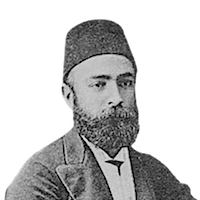
The initial challenge to Ahmed Rıza's leadership surfaced in 1896 when Mizancı Murat, a former professor and the publisher of the Mizan newspaper, arrived in Paris. Mizancı Murat held liberal views but, in contrast to Ahmed Rıza, he placed a high value on the caliphate and the Islamic identity of the Empire, a perspective widely embraced by the Young Turks in Europe. He was elected as the chairman of the Committee of Union and Progress, replacing Ahmed Rıza, and the following year, he relocated the organization's headquarters to Geneva.
During this period, Abdülhamid experienced a resurgence in his reputation and influence. The most challenging phase of his difficulties with the Armenians had subsided, and the war against Greece had culminated in victory. With these issues resolved, he turned his attention to dealing with the opposition. All the prominent Young Turks in Istanbul were apprehended, brought before the court, and subsequently sentenced to exile in Tripoli. Simultaneously, the Sultan succeeded in persuading Mizancı Murat and other leaders of the Committee of Union and Progress to return to Turkey, ostensibly to "assist the Sultan with reforms." Abdülhamid achieved this by offering them enticing administrative or diplomatic positions.
Despite the efforts of the Committee of Union and Progress to portray this agreement with the Sultan as a "truce," it was widely known how Abdülhamid had coaxed them into compliance. Consequently, they lost standing among the Young Turks, and Ahmed Rıza Bey regained influence. Nevertheless, the movement had suffered a severe setback, and the period between 1897 and 1899 represented its lowest point.
Conservatism versus Liberalism
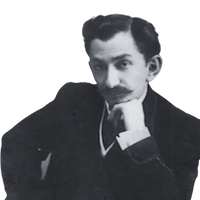
A pivotal shift occurred for the Young Turks in December 1899 when an influential general, Mahmut Celalettin Pasha (who also happened to be Abdülhamid's brother-in-law), arrived in Paris and aligned with the opposition, along with his sons Sabahattin and Lütfullah. For three years, Mahmut Celalettin Pasha played a guiding role among the Young Turks, akin to the role Mustafa Fazıl Pasha held among the Young Ottomans. Following his passing, his son Sabahattin, known as Prince Sabahattin, began to challenge the authority of Ahmed Rıza. Sabahattin embraced a staunchly liberal ideology, advocating for the minimization of the state and the empowerment of free enterprise as necessary measures to rejuvenate the Empire. In contrast, Ahmed Rıza held conservative nationalist views.
This schism resulted in a division within the movement, a schism that became evident during the inaugural Congress of Ottoman Liberals held in Paris in 1902. Sabahattin's faction cultivated strong connections with Armenian, Albanian, and Macedonian opposition groups following the Paris Congress, and they believed that both violent means and external assistance were justifiable as long as they contributed to the removal of Abdülhamid from power. Conversely, Ahmed Rıza's coalition firmly rejected any methods that could jeopardise the sovereignty of the Ottoman Empire. They preferred the term "Turk" over "Ottoman" to describe the Sultan's subjects and dismissed all attempts to find common ground with non-Turkish opposition groups as impractical. In contrast to Prince Sabahattin's group, Ahmed Rıza's faction exhibited a stronger nationalist stance and a preference for centralisation.
The formal split occurred when Prince Sabahattin established Osmanlı Hürriyetperveran Cemiyeti (Ottoman Association of Independence) and later, in 1906, Teşebbüs-i Şahsi ve Adem-i Merkeziyet Cemiyeti (League of Private Initiative and Decentralisation).

This period witnessed the rising influence of Ottoman nationalism and constitutionalism, partly spurred by the Russo-Japanese War of 1904-5 and the subsequent revolution in Russia. These events represented a historic first where an Asian nation triumphed over a European imperial power, compelling the European sovereign to acknowledge the need for a parliament and constitution. This victory served as an inspiring example for the Ottoman opposition, which further consolidated its strength with the arrival of two influential Young Turks, namely Bahaettin Şakir and Doctor Nazım, in Paris. While Ahmed Rıza was a theoretician, these newcomers would infuse the Committee of Union and Progress with organisational prowess.
The first organized opposition within the Ottoman Empire materialized in September 1906 when a group of young civil servants and military officers, many of whom had joined the Committee of Union and Progress prior to 1896, established Osmanlı Hürriyet Cemiyeti (Ottoman Freedom Society) in Salonica. Leading this group was Mehmet Talat Bey, a postal officer who had been exiled from Edirne to Salonica on the grounds of Committee of Union and Progress membership. This newly formed association efficiently organized itself in Macedonia, and aside from Mehmet Talat Bey, one of the key architects of this success was a young officer from the Third Army, Major Enver Bey.
In 1907, the group based in Salonica established contact with the expatriates in Paris. They found greater alignment with Ahmed Rıza's faction, rather than Prince Sabahattin's. Consequently, the Ottoman Freedom Society merged with Ahmed Rıza's group under the banner of the Committee of Union and Progress, resulting in a pivotal shift of the Ottoman opposition's focal point from Paris to Salonica.
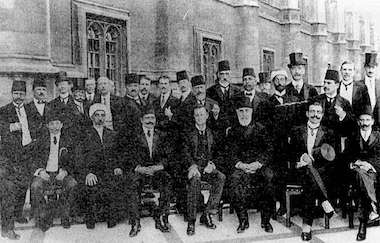
Simultaneously, the Committee of Union and Progress underwent rapid transformation, evolving into a genuinely revolutionary organization. Within slightly over a year, it established a network of branches in 75 Balkan towns, Istanbul, and, albeit with less success, in Anatolia. Through effective propaganda efforts, they recruited individuals, particularly army officers, who were willing to make sacrifices for their cause. The Committee even endorsed assassinations when individuals were perceived as posing a significant threat to the Committee's objectives.
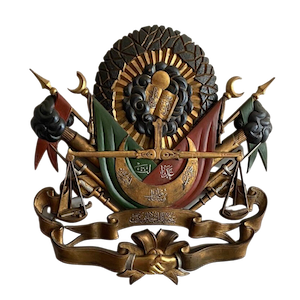
The Committee of Union and Progress also had its customs and traditions. New members were initiated with a ceremony that involved them being blindfolded, with one hand placed on the sacred book of their respective religion, while the other hand rested on either a revolver or an Ottoman flag:
"On top rested the constitution in the form of a book under a shining sun. Pennants reading ‘pen’ and ‘weapon’ hung from spears flanking the right and left sides respectively. From beneath each spear jutted a canon. Unlike the canon of the Ottoman imperial coat of arms, this pair of cannons was being fired, symbolising ideological dynamism. In the centre stood a large upturned crescent reading ‘fraternity, freedom, equality’. The word ‘justice’ hung above the middle of the crescent. Below the crescent snaked a ribbon emblazoned ‘Ottoman Committee of Progress and Union', while at the bottom of the coat of arms, below the ribbon, two clasped hands symbolised mutual understanding among the Ottoman peoples." (Şükrü Hanioğlu describes the organisation's emblem)
The Second Constitutional Period
In June 1908, Tsar Nicholas held a meeting with King Edward VII in the Baltic town of Reval (present-day Tallinn, capital of Estonia). Faced with the looming German threat, Russia and Britain were drawing closer and seeking to address shared concerns, including those related to Macedonia. Both nations decided to bolster their influence in this strategically significant region. When news of the Reval meeting reached Salonica, accompanied by rumours that Russia and Britain had reached an agreement to partition the Ottoman Empire, the Committee of Union and Progress concluded that it was time for decisive action. Their decision was further precipitated by the realization that agents of the Sultan were on the verge of uncovering their clandestine activities, necessitating swift action.
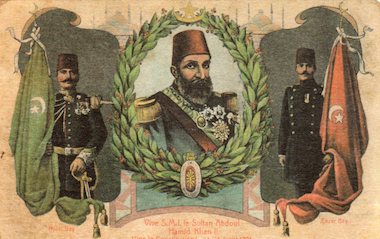
Finally, in July 1908, the trigger was pulled. A group of Unionist officers led by Resneli Niyazi Bey and Enver Bey organized their troops, took to the mountains, and demanded the restoration of constitutional rule. It was a full-scale rebellion. Initially, Sultan Abdülhamid attempted to suppress it, only to discover that the officers and troops were unwilling to fight against their comrades. To worsen the Sultan's predicament, the inspector he sent to the region, Şemsi Pasha, was assassinated by a Committee operative on 7 July. There was no way out for the Sultan but to accept the Committee's demands. On the night of 23 July 1908, the constitution, known as the Kanun-u Esasi, was reinstated, precisely thirty years after Abdülhamid had revoked it.
The reinstatement of constitutional rule was met with immense jubilation throughout the Empire. Enver Bey emerged as one of the celebrated "heroes of liberty" and addressed the exuberant crowd in Salonica:
"Citizens! I am truly grateful for the warmth you have shown towards me. I must confess that I may not have done enough to warrant such affection. My fortune lay in the fact that I was entrusted with a duty that any Ottoman would eagerly embrace. If I have fulfilled my role effectively, that would be the most gratifying reward for me. Thanks be to God, we have successfully reinstated the constitution and reclaimed our freedom. However, we must not delude ourselves into thinking that our task is complete. The more formidable phase of our journey now commences. To advance this initial step towards progress, we must redouble our efforts and exercise greater vigilance. Henceforth, all citizens, regardless of their religious affiliation, should join hands to elevate our homeland. Long live the nation, long live the fatherland!"
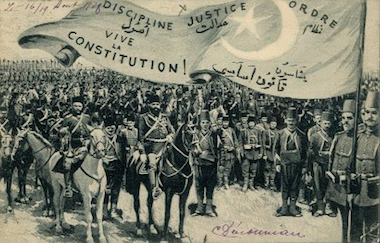
The revolution of 1908 was instigated by Unionist army officers. The Committee of Union and Progress ensured, through public gatherings, that the populace recognized it was their own actions, not the Sultan's, that had brought about the restoration of constitutional rule. There was widespread elation among the people, irrespective of their ethnic or religious backgrounds throughout the Empire. Expecting a better life and a promising future, they commenced celebrations of their newfound liberties, including freedom of thought and expression.
During this period, an interesting occurrence unfolded. Emboldened by the constitution, workers initiated strikes to demand higher wages. However, a new law was swiftly enacted that prohibited labor unions in the public sector, making it challenging for organized strikes to take place. Despite portraying themselves as champions of liberty, the Committee of Union and Progress supported the government in this matter. The Committee notably sided with the capitalists in curtailing the limited freedoms that organized workers had managed to secure.
The revolution of 1908 also signified a pivotal moment for the Ottoman opposition, solidifying the authority of the Unionists. With the exception of Bahaettin Şakir and Doctor Nazım, who maintained close ties with the Salonica group, other opposition members in Europe failed to sustain their influence.
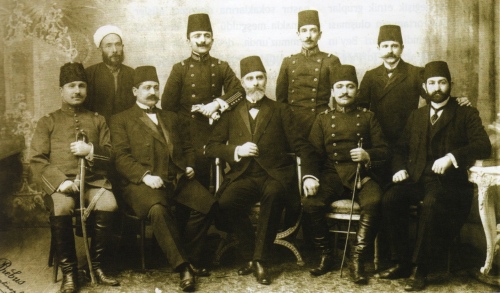
Despite the considerable success achieved by the Committee of Union and Progress in 1908, they refrained from seeking government control or deposing the Sultan. This decision primarily stemmed from the Unionists' lack of self-assurance, as most were young officers in their late twenties and early thirties. Additionally, Abdülhamid still held considerable esteem among the populace, making it unwise to challenge his position. Consequently, the Committee chose to leave governance in the hands of the existing government, headed by Grand Vizier Sait Pasha, and instead acted as custodians of the reinstated constitutional rule. They intervened in governmental matters when they deemed it necessary. In essence, the aftermath of the 1908 revolution resulted in a compromise between the Unionists and the Sultan's administration. However, this approach led to instability in the ensuing years, as the Committee exerted pressure on the government without officially assuming responsibility.

The first clash between the government and the Committee of Union and Progress arose when the latter insisted on directly appointing the Minister of War and Minister of the Navy instead of endorsing the Grand Vizier's nominations for these roles. This disagreement proved short-lived; Sait Pasha was compelled to resign, and Kıbrıslı Kamil Pasha took his place.
A significant occurrence in the post-revolutionary era was the elections, the first in three decades. The Committee of Union and Progress, with a well-established organization in European Turkey, expanded its network into Asian and North African regions, garnering support from diverse ethnic and religious groups, although its primary membership predominantly comprised Turks and Muslims. The Committee emerged victorious in the elections, securing an overwhelming majority in Parliament. Nonetheless, most deputies were local candidates who entered Parliament through Committee of Union and Progress lists rather than being actual Committee members. This mechanism was the means by which the Committee secured support in the provinces, but it notably diluted party discipline within Parliament. The sole opposition to the Committee of Union and Progress in the elections, Osmanlı Ahrar Fırkası (Ottoman Liberal Party), secured just one seat.
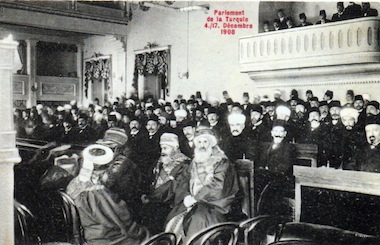
The influence of the Palace was diminished, though not entirely eliminated, and for the first time since 1878, the primary bureaucrats of the Sublime Porte emerged as independent political entities. To oversee the government, the Committee of Union and Progress relied on its parliamentary majority but retained a more subdued role.
Despite the significant achievements of the revolution and the success in the elections, the Committee encountered two forms of opposition throughout 1908 and the initial months of 1909. The first challenge came from the Ottoman Liberal Party, which received support from Grand Vizier Kamil Pasha. The Committee managed to remove Kamil Pasha from his position and replaced him with a more sympathetic figure, Hüseyin Hilmi Pasha. This change prompted an intense verbal conflict between newspapers supporting the Committee and those aligned with the Liberal Party. On 6 April 1909, the chief editor of an opposition newspaper was assassinated. His funeral transformed into a large-scale protest against the Committee of Union and Progress.
The Incident of 31 March
The second form of opposition encountered by the Committee of Union and Progress emanated from conservative religious circles, particularly junior Islamic scholars and sect leaders. This group, led by Derviş Vahdeti, the Nakşibendi leader and owner of the Volkan newspaper, had rallied around İttihad-ı Muhammedi Cemiyeti (Association of Mohammedan Union). They rejected the materialist principles upheld by the Committee of Union and Progress and advocated for the reinstatement of Islamic law.
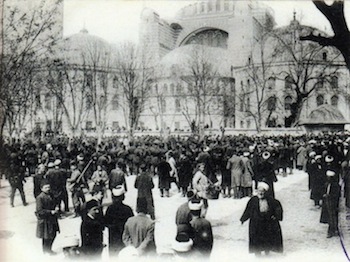
Their protests escalated into an armed uprising that erupted in Istanbul during the night of 12/13 April 1909 (corresponding to 30/31 March 1325 in the lunar calendar). The rebellion was instigated by Macedonian troops stationed at the Taşkışla Barracks, who were later joined by radicals and religious school students. Together, they marched towards the Parliament. As daylight emerged, additional religious scholars and soldiers joined the rebellion. The government was gripped with alarm, reluctant to dispatch loyal troops to quell the uprising. Instead, they sent the police chief to hear out the rebels' demands, which included: i) immediate removal of the Grand Vizier, Minister of War, and Minister of the Navy; ii) reassignment of some Unionist officers to remote regions; iii) dismissal of the Unionist Chairman of the Parliament; iv) removal of select Unionist deputies; v) reinstatement of religious law; vi) amnesty for soldiers participating in the rebellion.
Left powerless against the rebels' demands, Grand Vizier Hüseyin Hilmi Pasha resigned and was succeeded by Tevfik Pasha. A new cabinet was established, led by the Minister of War, Ethem Pasha, who pledged to meet all of the rebels' requirements. Simultaneously, clashes persisted on the streets of Istanbul, resulting in the deaths of at least twenty individuals, mostly Unionist officers, including two parliamentary deputies. With limited choices, the Committee of Union and Progress had to either exit the capital or operate in secrecy. Merely a handful of deputies remained in Parliament, announcing their acceptance of the rebels' demands.
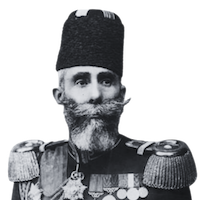
Even though the Unionists had to leave Istanbul, they retained their influence in other regions of the Empire, particularly in Macedonia. Swiftly launching a highly effective propaganda campaign, they mobilized efforts to quell the rebellion. A military campaign, known as Hareket Ordusu (the Liberation Army), was initiated on 15 April 1909, commanded by Mahmut Şevket Pasha, the commander of the Third Army. Comprised of Mahmut Şevket's regular troops and assisted by the volunteers led by Major Resneli Niyazi Bey, a key figure in the 1908 revolution, this force was initially based in Salonica.
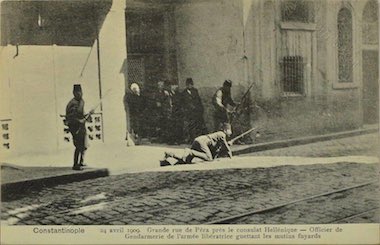
As the Liberation Army advanced towards Istanbul, the Parliament endeavored to forestall armed intervention by dispatching a delegation to negotiate with Mahmut Şevket Pasha. However, unable to sway his decision, the delegation opted to accompany the army and called for other deputies to join them. On the morning of 24 April 1909, the Liberation Army entered Istanbul without encountering significant resistance. They swiftly subdued the rebellion and imposed martial law. Subsequently, two military tribunals were established, leading to the trial, conviction, and execution of several rebels, including Derviş Vahdeti.
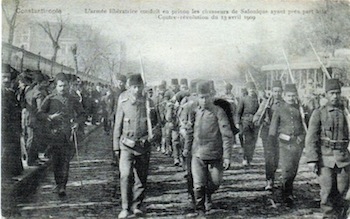
The events of 31 March Incident highlighted that the political strength of the Committee of Union and Progress relied on its members within the military and its broader influence over the armed forces. Despite clear violations of the constitution by several active officers, they were allowed to retain their positions in Parliament. Opposition to the Committee, resurfacing post-1910, centered on the politicization of the military. Failing to address this concern, an anti-Unionist movement was organized within the armed forces, threatening armed rebellion. A similar rift emerged between the Committee and Parliament, with the opposition accusing the Committee of using governmental authority irresponsibly.
In response to these allegations, the Committee of Union and Progress decided to form a political party that wouldn't replace the Committee but would coexist in the Parliament. However, the parliamentary group of this new party lacked the confidence of Unionist leaders due to its lack of party discipline, leading to the retention of real power within the Committee's central leadership.
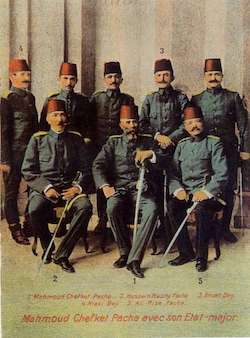
Between 1909 and 1911, a series of new political parties emerged, some established by former opponents of the Committee of Union and Progress, while others were formed by reactionary Unionists following either a more liberal or a more conservative approach. Mutedil Hürriyetperveran Fırkası (Moderate Freedom-lovers Party) and Islahat-ı Esasiye-i Osmaniye Fırkası (Major Ottoman Reformation party) belonged to the former group, whereas Ahali Fırkası (People’s Party) and Hizb-i Cedid (New Party) fell within the latter category.
This period also witnessed the inception of the first organised socialist movement within the Empire. In Istanbul, a small yet influential group of leftist intellectuals criticized the Committee of Union and Progress for its prohibition on labor unions and the rights to strike. This group, led by Hüseyin Hilmi Bey, established Osmanlı Sosyalist Fırkası (Ottoman Socialist Party) in September 1910. However, this party remained modestly established, lacking representation in Parliament and wielded minimal influence on Ottoman politics.
The opposition against the Committee of Union and Progress was intensifying, gaining impetus notably with a significant rebellion in Albania in 1910 and the assassination of journalist Ahmed Samim. In fear of a repetition of the counter-revolutionary response from the previous year, the Committee detained multiple opposition members, alleging their involvement in a conspiracy. Despite these efforts, the opposition continued to grow. By 1911, the situation had become so critical that the Committee had no alternative but to seek reconciliation with the opposition. Several steadfast Unionists, including Talat Bey, departed from the government. A new agenda, echoing the demands of the opposition to a large degree, was introduced. Hakkı Pasha formed a new government; however, he later resigned in the same year when Italy declared war on the Ottoman Empire. He was succeeded by Sait Pasha, commencing his eighth term as Grand Vizier.
In November 1911, all political parties and groups that opposed the Committee of Union and Progress consolidated under the newly formed Hürriyet ve İtilaf Fırkası (Party of Freedom and Understanding). This coalition comprised a mix of conservatives and liberals who shared little common ground other than their shared disdain for the Committee of Union and Progress. Surprisingly, a mere three weeks after its formation, the party succeeded in securing victory in the by-elections in Istanbul, triumphing over the Committee candidate.
CUP’s Influence Eroding
Since 1908, the Committee of Union and Progress had relied on its influence in the Parliament to control the government, the Palace, and the bureaucracy. However, this influence began to diminish, prompting the Committee to take action. Through various coercive methods, including violence and intimidation, they secured a majority in the Parliament during the 1912 elections. Consequently, the Parliament became a compliant tool of the Committee of Union and Progress, with only a small number of opposition deputies. From the opposition's perspective, the Parliament was not deemed legitimate, and the struggle had to continue externally.
In May 1912, Colonel Sadık Bey and his companions demanded the government's resignation and threatened a coup, forming a group of officers known as Halaskar Zabitan (Saviour Officers). Facing a loss of confidence in the Parliament, Grand Vizier Sait Pasha resigned, along with Mahmut Şevket Pasha, who was disenchanted by the internal political conflicts within the army.
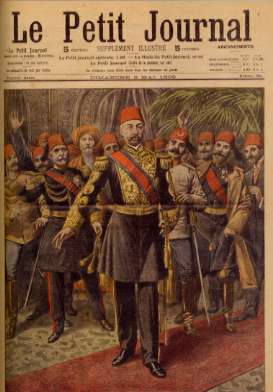
Following Sait Pasha's departure, an assembly of seasoned statesmen formed a "Grand Cabinet." These statesmen attributed the political chaos in the Empire to the actions of army officers and the irresponsible policies of the Committee of Union and Progress. Their primary goal was to diminish the influence of Unionists, particularly those members who held positions within the army. Subsequently, the Parliament was dissolved, and several Unionists either fled the country or went underground. It was a period marked by intense political strife in the Empire, resulting in the Committee of Union and Progress facing a period of defeat.
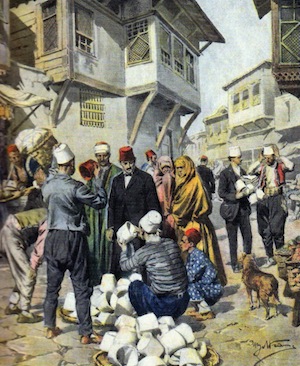
It would not take much time until the domestic political struggles were overshadowed by larger problems outside. As the CUP was fighting its opposition at home, the Empire was sliding into a major conflict on the international scene. Young Turks had believed that the restoration of the constitution would bring prestige and support for the Empire among the liberal states of Europe. However, this was not to be the case. Immediately after the revolution of 1908, Austria-Hungary annexed Bosnia; Bulgaria announced merger with East Rumelia and Crete joined Greece. The great powers were refusing to intervene on behalf of the Ottoman Empire and the only successful attempt of this period was the boycott against Austro-Hungarian goods sold in Ottoman Empire. It was the first practice of a new approach to politics in which the government mobilised the people for a common cause.
Following these initial setbacks, the pressures on the Empire persisted. On one side, there were external pressures arising from the imperialist powers' intentions to divide the Ottoman territories and the expansionist strategies of the recently formed Balkan states. On the other side, internal pressures emerged from separatist movements within different ethnic groups.
The Young Turk revolution in 1908 pledged to embrace all the Empire's ethnic groups, promising freedom, equality, and unity for all. Nevertheless, this change in government didn't quell the unrest among the diverse nationalities, leading to a significant letdown for the Committee of Union and Progress. Multiple uprisings erupted among Albanians in Macedonia, sparked by certain government policies like taxation, military conscription, and the Committee's efforts to centralise power. Another region of substantial unrest was Yemen in the Arabian Peninsula, where a rebellion was forcefully quashed in 1911 at a high human cost.
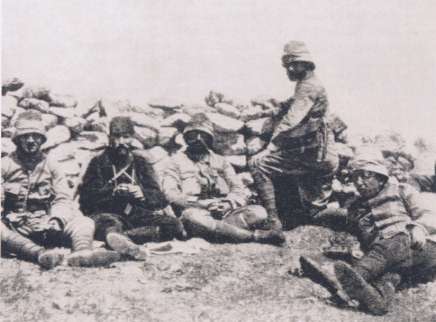
Turkish officers in Tripoli • Popüler Tarih, August 2000
Each of the major European powers had their own imperial ambitions in Ottoman territories, but the most pressing threat at the time came from the Italians. Having fallen behind in the race for colonial expansion, Italy had set its sights on Northern Africa. Over the past decade, Italy had pursued a strategy of peaceful engagement in Tripoli. After securing approval from Britain, France, and Russia, and ensuring the neutrality of Germany and Austria-Hungary, Italy opted to take action.
On 28 September 1911, Italy issued a 24-hour ultimatum to Istanbul, demanding the presence of Italian troops in Tripoli to safeguard the local Italian population. Without waiting for the Sublime Porte's response, Italy declared war on the Ottoman Empire.
Being isolated from the mainland, the province was vulnerable, and the Italians swiftly occupied the coastal areas. With the Italian Navy dominating the Mediterranean and Egypt under British control, the Ottoman General Staff couldn't dispatch troops to Tripoli. Despite the slim chances of resisting the invasion, the Committee of Union and Progress insisted on implementing countermeasures. Not because the province held significant value for the Empire, but losing it would have been a disastrous blow to the Ottoman Empire's reputation among its Muslim populations.
There was a significant response among young Turkish officers against the Italian invasion. Several officers, including Major Enver Bey and Mustafa Kemal Bey, chose to volunteer and travel to Tripoli to coordinate local resistance.
Although the efforts of the Turkish officers yielded some success, slowing down the Italian advance, on 5 November 1911, the Italian government declared the annexation of Tripoli. Faced with resilient opposition in the province, the Italians expanded the theatre of war, bombarding the Dardanelles in April 1912 and seizing all of the Dodecanese Islands the following month. Peace talks between the Ottoman Empire and Italy commenced while fighting was ongoing. Given the highly precarious situation brewing in the Balkans, the Sublime Porte was compelled to agree to Italy's terms. A peace treaty was signed between Italy and the Ottoman Empire in Ouchy on 18 October 1912.
Trouble in the Balkans
The newly independent Balkan states shared a common objective: expelling the Ottomans from the peninsula. However, for a prolonged period, they struggled to unify their efforts and take coordinated action against the Empire. This was due to their inability to agree on how to divide the territories after the Ottomans' departure. The situation shifted in 1911. In March of that year, Serbia initiated an alliance with Bulgaria, ostensibly for defensive purposes but ultimately aimed at the collective goal of ousting the Ottomans. A similar agreement between Greece and Bulgaria was reached in May 1912, while Serbia and Montenegro formed an alliance in October. Italy's invasion of Tripoli had revealed the political and military vulnerabilities of the Ottoman Empire, further motivating the Balkan states to act.
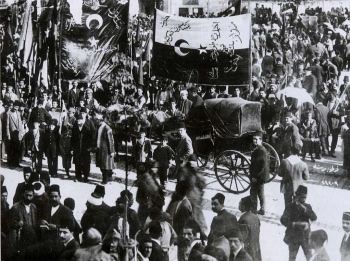
On 2 October 1912, the united Balkan states issued a joint ultimatum to the Ottoman Empire, demanding extensive reforms in Macedonia under foreign supervision. The Sublime Porte declared readiness to implement all the previously announced reforms but was not willing to relinquish sovereignty over Balkan territories. Montenegro declared war on 8 October 1912, followed by other Balkan states. None of the major European powers desired war, but their disagreements over Balkan affairs prevented concerted efforts to prevent it.
The original Ottoman war strategy primarily involved a defensive approach, aiming to retreat to Albania in the west and Rumelia in the east. This strategy was intended to buy time for the troops stationed in the Empire's Asian provinces to reach the Balkan front. However, this plan had been devised by the former Chief of Staff, Ahmed İzzet Paşa, who, at the outbreak of the Balkan War, was serving in Yemen. His successor, Nazım Paşa, chose not to adopt these plans and instead decided to confront the Serbs and Bulgarians simultaneously. This decision proved to be a fatal mistake, as the Ottoman army was outnumbered by the Balkan armies.
Following defeats in the Battles of Kırkkilise and Lüleburgaz against the Bulgarians and a loss to the Serbs in Kumanovo, the Ottoman army retreated to the Çatalca line on the outskirts of Istanbul. Only a few fortified towns—Ioannina, Shkoder, and Edirne—remained resistant. Other than these, the Balkan armies were at the gates of the Ottoman Empire's capital.
Due to the dire situation of the war, the Sublime Porte agreed to an armistice on 3 December 1912. Ten days later, two diplomatic congresses were held in London, one involving the warring nations and the other among the major European powers. They agreed to leave Istanbul and the Straits to the Ottomans but to establish an independent Albania. Negotiations among the victors over the division of Ottoman territories stalled due to disagreements on the new Balkan borders.
Simultaneously, in Istanbul, the Committee of Union and Progress had been planning to overthrow the government, not solely due to the war but mainly owing to internal issues. In November 1912, when a former opponent of the Committee was appointed Grand Vizier, the government's pressure on the Unionists increased. As the Committee's existence was in jeopardy, its leaders, Enver and Talat, saw the London Conference as an opportunity to portray their actions as serving the interests of the Empire, which was on the brink of territorial dissolution, rather than solely protecting the Committee's interests.
Raid on the Sublime Porte
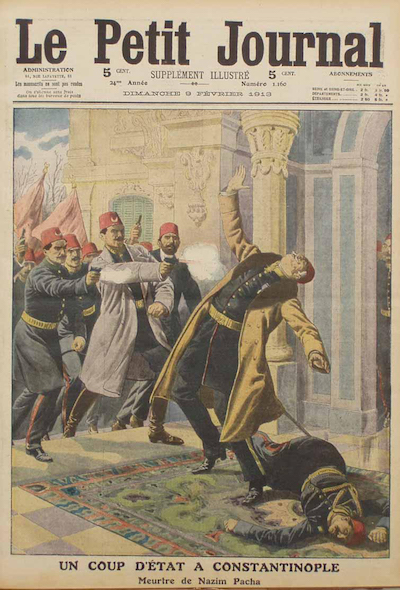
On 17 January 1913, the major European powers sent a set of demands to Istanbul, which included the surrender of Edirne to the Bulgarians. This was a highly sensitive matter as Edirne, a former capital of the Ottoman Empire, had a predominantly Muslim population and was effectively resisting the Bulgarian siege. When it became evident that the government was inclined to comply with this demand and relinquish Edirne, a faction of Unionist officers, led by Enver Bey, carried out a coup. They stormed the Sublime Porte, broke into the meeting hall where the cabinet was gathered, shot the Minister of War, Nazım Pasha, and compelled Kamil Pasha to resign. Following this upheaval, a new cabinet was formed under Mahmut Şevket Pasha, who assumed roles as both Grand Vizier and Minister of War.
The Balkan states viewed the coup in Istanbul as an opportunity to reignite their offensive to deliver a final blow to the declining Ottoman Empire. The Committee of Union and Progress was advocating for a counter-offensive from the Çatalca line. However, the army was too feeble for such action, and the roads were impassable due to severe winter conditions. Plans for an amphibious landing at Şarköy to encircle the Bulgarians faltered, as did a simultaneous breakthrough operation in the Gallipoli peninsula. Although the Çatalca line managed to withstand the Bulgarian assaults, Edirne couldn't endure any longer and fell on 26 March 1913.
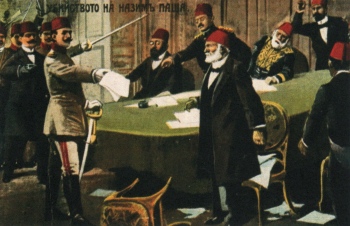
the raid on the Sublime Porte • Bulgarian postcard, Mehmed Nail Bey collection
Following the loss of Edirne, even the Committee of Union and Progress acknowledged that there was no alternative but to accept an armistice. A ceasefire was declared on 16 April 1913, and through the subsequent London Agreement signed on 10 June all territories west of the line between Enos on the Aegean coast and Midia on the Black Sea coast, including Edirne, were ceded.
The Balkan states, however, remained at odds regarding the division of gains. Despite not participating in the war, Romania claimed that Bulgaria's gains had created an unfair advantage and demanded compensation. Serbia and Greece were also dissatisfied with the territorial division, joining forces against Bulgaria. Observing these developments, Bulgaria acted preemptively, launching an offensive against the Serbs, thus sparking the Second Balkan War.
Bulgaria had isolated itself from other Balkan states and was now surrounded by enemies. This presented an opportunity for the Ottoman Empire to reclaim lost territory. Although the Committee of Union and Progress advocated for immediate action, the government and the General Staff preferred caution. Despite the Sublime Porte's hesitation, Enver and a group of junior officers took matters into their own hands, attacked Edirne, and seized the city. The “Hero of Freedom” from 1908 was now hailed as the “Liberator of Edirne.” Bulgaria had no choice but to seek peace, and an armistice was signed in Istanbul on 29 September 1913.
While the Ottoman Empire managed to retain Edirne, it lost most of its European territories, including regions like Macedonia, Albania, and Thrace, which had been the heart of the Empire for centuries. Even Salonica, the birthplace of the Committee of Union and Progress, was lost. The Balkan Wars had devastating effects economically, socially, and demographically. Similar to the aftermath of the Turco-Russian wars of 1878, Istanbul was flooded with Muslim refugees. Severe typhus epidemics claimed thousands of lives. Those refugees who survived the diseases remained homeless for months until they could be resettled.
After the January 1913 coup, the Committee of Union and Progress began to dominate the internal political landscape of the Ottoman Empire. During the initial months, there was little pressure on the liberal opposition, aside from requesting their leaders to abstain from political involvement.

This mild attitude changed on June 11, 1913, following the murder of Mahmut Şevket Paşa by sympathizers of the Freedom and Understanding Party. Numerous arrests were carried out, and those implicated in the conspiracy were sentenced to death. The Committee of Union and Progress seized upon this assassination as an opportunity to reinforce their grip on the government. Enver Bey was swiftly promoted twice, assuming the roles of both general and Minister of War. Talat Bey took charge as the Minister of the Interior. Cemal Bey, who had been involved in the Raid on the Sublime Porte, was also elevated to the status of Pasha. The new Grand Vizier was another prominent Unionist, the Egyptian prince Sait Halim Pasha.
This new power structure is often referred to as a "triumvirate" comprising Enver, Talat, and Cemal. However, some historians disagree and highlight other power concentrations within the Committee. Undoubtedly, Enver, Talat, and Cemal wielded significant influence, but they did not possess absolute power. Enver Paşa encountered opposition within the army, including from figures like Cemal Paşa. Local party leaders, known as inspectors, and Unionist governors had their distinct spheres of influence, displaying strength and independence. The Committee of Union and Progress was steered by an internal group of around fifty individuals representing diverse factions. Talat's significant power stemmed from his capacity to foster unity among these faction leaders.
After 1913, Ottoman Empire politics were chiefly governed by the internal structures of the Committee of Union and Progress rather than the government. The cabinet often faced decisions already made by the Committee. Parliament elections were held in the winter of 1913-14, and despite the absence of a formal ban on opposition participation, they refrained from engaging in the elections. Consequently, the resultant parliament became a rubber stamp for the Committee.
Within a year after the disastrous Balkan War, the Committee of Union and Progress and the Ottoman Empire, in general, found themselves in an even more catastrophic situation.
![]()